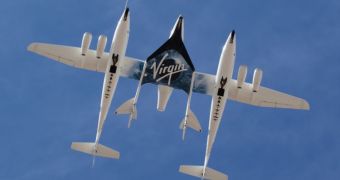Officials at Virgin Galactic hope to begin ferrying paying passengers to suborbital altitudes by the end of next year. The SpaceShipTwo vehicle and the WhiteKnightTwo carrier aircraft will be used in tandem in order to achieve this objective.
The former has already completed a number of 16 drop tests, meant to ensure that it can safely travel back to the ground once it reenters Earth's atmosphere. Though it will not go to orbit per se, it will still fly more than 100 kilometers above the surface.
Virgin has a number of objectives still left to achieve, including the successful completion of an extensive series of rocket-powered test flights. The hybrid rocket motor used by SpaceShipTwo is built by Virgin partner Scaled Composites.
Ultimately, whether or not the suborbital spacecraft will start commercial operations by the end of 2013 depends entirely on the success of the upcoming test flights. On the bright side of things, Scaled Composites has already received an experimental launch permit.
The announcement was made last month by the US Federal Aviation Administration (FAA). The permit was required in order for the two companies to be allowed to use their large hybrid rocket motor. This was the first time such permission was awarded to a private company.
SpaceShipTwo is able to carry six passengers and two pilots to the edge of space, allowing them to experience a few minutes of microgravity. The cost for such a joyride is currently $200,000.
Aabar Investments PJS and Sir Richard Branson are the primary investors in Virgin Galactic, which has thus far secured several hundred pre-orders for a seat on the spacecraft. So far, preparations appear to be going very well.
In addition to the 16 drop tests, Scaled Composites also completed a number of 10 rocket motor burns. These were either partial, or full-duration events, Space reports. All systems behaved within expected parameters.
“Target date of first in-flight hybrid test is toward the end of this year. They will take place over the course of a few month,” explains the President and CEO of Virgin Galactic, George Whitesides.

 14 DAY TRIAL //
14 DAY TRIAL //